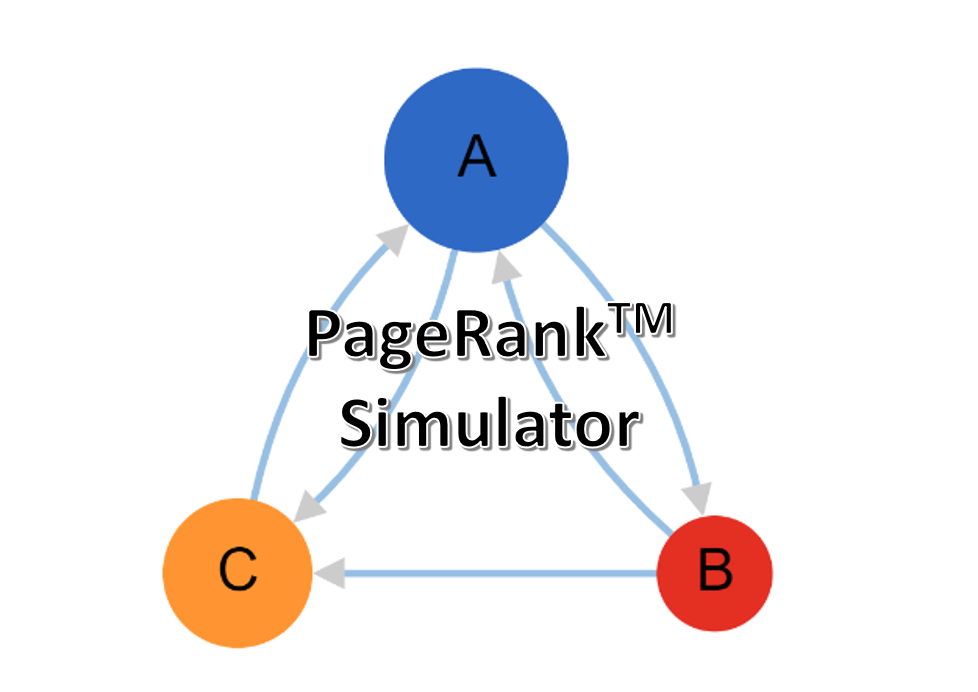PageRank Algorithm
Section 1.3.4 of the OCR H446 Specification states that students must understand how Google's PageRank algorithm works
This tool is designed for teachers / students studying A Level Computer Science. It allows you to visualise the connections between web pages and see calculations behind each iteration of the PageRank algorithm

PageRank is one of many algorithms Google uses to work out which order to display search results
The co-founders of Google, Sergey Brin and Larry Page developed the PageRank algorithm in 1996 at Stanford University.
Increasing the PageRank score of a web page will mean that page is displayed higher than other pages in a search engine listing, which means more visitors and therefore potentially more customers or money generated from a web page
The formula used to calculate PageRank is:
PR(A) = (1 – d ) + d ( PR(t1) / C(t1) + ... + PR(tn)/C(tn) )
PageRank is an iterative algorithm which means you repeat the calculation for each page multiple times until the values eventually settle on the final PageRank scores for each page
Use the simulator below to see the working for each stage of the algorithm
PageRank Simulator
You can describe any links between pages here. The format is:
PageName:Link1,Link2,Link3
Iterations
Working
Hover over part of the working for an explanation of each term